










Bees—we all know they are under threat, don’t we?
But why are they so important, and what can be done to mitigate the danger they are in?
At the heart of their importance lies their role as pollinators. This seemingly simple act is crucial for the production of fruits, vegetables, nuts, and seeds. In fact, it’s estimated that one-third of the world’s food crops depend on pollinators like bees. Without them, many of the foods we rely on for sustenance would cease to exist or become prohibitively expensive.
Beyond agriculture, bees play a vital role in maintaining biodiversity. By pollinating a diverse range of plants, they contribute to the reproduction of countless species, thereby supporting entire ecosystems. From wildflowers to trees, bees ensure the survival of plant communities that provide habitat and sustenance for a myriad of other organisms, from insects to birds to mammals…to us humans!
Bees are also indicators of environmental health. Their presence and abundance can serve as a barometer for the overall well-being of ecosystems. Declines in bee populations may signal broader ecological imbalances, such as habitat loss, pesticide use, and climate change. As such, protecting bees and their habitats is not only crucial for their survival but also for the health and resilience of entire ecosystems.
In addition to their ecological significance, bees also have profound cultural and economic importance. For centuries, humans have benefited from the products of bees, including honey, beeswax, and propolis. Beekeeping, or apiculture, remains an important livelihood for many people around the world, providing income, sustenance, and even therapeutic benefits.
Despite their immense value, bees face many threats to their survival. Habitat loss, pesticide

exposure, disease, climate change, and invasive species all take their toll on bee populations. The widespread use of neonicotinoid pesticides has been implicated in the decline of bee populations worldwide, leading to calls for greater regulation and alternative pest management strategies.
Fortunately, there is growing recognition of the need to protect bees and support their populations. Efforts to conserve and restore bee habitats, reduce pesticide use, and promote beefriendly practices are underway in many parts of the world. From urban beekeeping initiatives to pollinator-friendly gardening campaigns, individuals, communities, and governments are taking action to safeguard bees and their vital ecosystem services.
As individuals, we can help by:
• planting a diverse set of native plants, which flower at different times of the year
• buying raw honey from local farmers
• buying products from sustainable agricultural practices
• avoiding pesticides, fungicides or herbicides in our gardens
• protecting wild bee colonies when possible
• sponsoring a hive
• making a bee water fountain by leaving a water bowl outside
• helping to sustain forest ecosystems
• raising awareness around us by sharing this information within our communities and networks
GO ON, HELP SAVE THE BEES – THE WORLD WOULD BE A VERY DIFFERENT PLACE WITHOUT THEM!








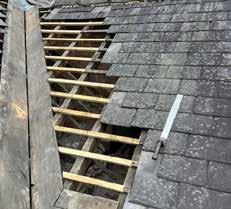
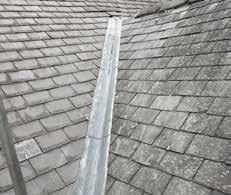



We are proud to have offered our services to the area for over 20 years building up our reputation by offering a high service at affordable, honest and reasonable prices to both residential and commercial customers. Many of our customers are return customers or gained through ‘word of mouth’ and we welcome this loyalty. 24 HOURS 7 DAYS A WEEK

To advertise please call Voice Team on 01773 549 035




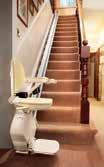


Local Installation, Repairs and Servicing of Stairlifts
■ Local, family-run business
■ Almost 20 years’ experience
■ New, reconditioned and rental available
■ Friendly, personal service
■ Free, no obligation survey
■ 24/7, 365 days call-out
■ Repair and service all makes of stairlifts

■ Members of Age UK

info@prioritystairlifts.co.uk
www.prioritystairlifts.co.uk
Which soap do you remember from your childhood? There were many brands to choose from in the 1960s and 70s like Lux or Camay Beauty soaps where the model on the television advert demonstrated how to use the soap by rubbing in circular movements blobs of lather on her cheeks. My granny was not impressed when I tried this method and she told me to go back and wash the whole of my face.
During WW2, soap was rationed as the fat and glycerine from it was needed to make explosives and for other military uses.
From 1942, four coupons were given each month, and each coupon was worth 4oz hard soap, 3oz toilet soap, half an ounce of liquid soap, 6oz soft soap, 3oz soap flakes or 6oz soap powder. Shaving soap was never rationed but became scarce as did the other types.
Soap operas from radio (1930s) and TV (1950s) were so called because they were sponsored by soap manufacturers.
Washing powders like Oxydol and Rinso had to perform more than one household task. The wartime Rinso packet had instructions for how to use for laundry and dishwashing.


Knight’s Castille, Palmolive, Pears, Fairy, Sunlight, Imperial leather, Carbolic, Lifebuoy, Coal tar, Pit Head Bath soap if your father was a miner, were the types I grew up with. To imagine my parents and grandparents having to go without what we regard as basic cleaning products and five inches of water in your bath for the whole family a week, makes me glad I didn’t have to live through those times.
Janet and Paul Barrass are All Around the Shire. Find us on or email: oldfield512@btinternet.com for more information. Janet










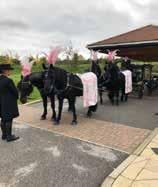










EASTBOURNE
Haddon Hall Hotel
Fri 24th - Tue 28th May
Days -
SCOTLAND SAIL & RAIL
Winnock Hotel, Drymen
Tue 4th - Sun 9th Jun 6 Days - £745
TORQUAY
Livermead House Hotel
Thu 6th - Mon 10th Jun 5 Days - £499

BOURNEMOUTH
WARNER LEISURE
Heythorp Park, Cotswolds
Mon 1st – Fri 5th Jul 5 Days - £645
NORTHERN IRELAND
Ramada Hotel, Belfast
Tue 2nd - Sat 6th Jul 5 Days - £625

WILTSHIRE WARNERS
Littlecote House
MOBILE BOOKING OFFICE LOCATIONS





At a time when all the traditional ‘pubs’ in Pinxton have now closed we cast our mind back to former days to contrast the past to the present, with a look at some of Pinxton’s former traditional public houses, which have long since disappeared and most, long forgotten. The Old House at Home’, was such an establishment.
At a time when all the traditional ‘pubs’ in Pinxton have now closed we cast our mind back to former days to contrast the past to the present, with a look at some of Pinxton’s former traditional public houses, which have long since disappeared and most, long forgotten. The Old House at Home’, was such an establishment.
Together with, ‘The Sign of the Three Fishes’, and ‘The Palmerston Arms’, ‘The Old House at Home’, was one of Pinxton’s long forgotten public houses.
It was located alongside the Pinxton Mill Branch of the Cromford Canal, between Pinxton Wharf and Codnor Park; to the West of the coal wharf adjacent to Pinxton No’s 1 and 6 shafts. This area was once a thriving hive of activity.
Its primary purpose was to provide stabling for horses, which pulled the barges and succour for the bargemen, eager to ‘whet their whistle’, following a hard day’s labour. Additionally, it was the ‘local’ for the mineworkers’ who lived in the twenty cottages, just to the east, called Meadow Row and Nether Meadow Rows. It was situated along the canal towpath towards Pye Bridge.
It was one of the least known and least accessible of all the village’s ‘watering holes’. It was certainly the furthest from most of its population, as it was built primarily to serve the bargemen on the newly constructed canal towpath between Pinxton and Pye Bridge, on the Pinxton Mill arm of the Cromford Canal.
While the entrance to the bar was level with the towpath,
access to the stabling facilities for the horses, employed to pull the canal barges, was down a steep path to the left of the pub frontage.
‘The Old House at Home’, dated from circa 1795, when the Pinxton arm of the canal was completed.
Despite its remote location from most houses in the village it was popular, as witnessed by its longevity, and was popular for well over a century, particularly on fine summer evenings.
Next month more documented facts from Pinxton’s mining past, with particular emphasis on the employment of young boys’.
Article submitted on behalf of Pinxton and South Normanton Local History Society. Monthly meetings 7.15 pm Third Monday at South Normanton Post Mill Centre. All welcome




If you can’t make it into the store, we can offer a FREE home selection service, where we bring the store to you.




All our BRITISH MADE sofas, chairs & recliners are made to order and normally delivered within 6-8 weeks. Choose from over 2000 fabrics and leathers.
Only 100% genuine leather used on all our Italian suites, which are made to order in any colour and normally delivered within 8 - 10 weeks Reupholstery, repairs & cushion replacement service available - call for appointment Tel: 01623 440 448






Method:
1. Heat your oven to 200°C/fan 180°C/ gas 6.
2. Cook the potatoes in a large saucepan of boiling water over a high heat for 15 minutes or until tender. Drain, return to the pan and mash well. Leave to cool then stir in the quark, season to taste and set aside.
3. While the potatoes are cooking, put the leeks and 2 tbsp water in a nonstick saucepan over a medium-high heat. Cover and cook for 10 minutes or until tender, stirring occasionally, then tip into a large ovenproof dish.
4. At the same time, cook the eggs in another saucepan of boiling water over a high heat for 9 minutes or until just hard-boiled. Cool under cold running water, peel, halve and add to the leeks.

For more information visit
www.slimmingworld.co.uk

This fish pie is packed full of delicious ingredients; fish, prawns, eggs, leeks in a creamy sauce, all topped with fluffy mash. Yum!
5. Pour the milk into a non-stick saucepan and bring to a simmer over a medium heat. Add the white fish, reduce the heat to low and cook for 5 minutes. Using a slotted spoon, carefully transfer the fish to the ovenproof dish, along with the prawns, herbs and lemon juice.
6. Strain the milk into a clean pan and put it over a high heat. Mix the cornflour with a little cold water and add to the milk. Bring to the boil, reduce the heat to low and cook for 2 minutes, stirring often. Pour the thickened sauce over everything in the dish, season lightly and gently mix it all together.
7. Spoon the mashed potatoes on top, making a pretty pattern with a fork if you’re feeling creative, and bake for 20-25 minutes or until the topping is lightly browned. Serve with your favourite Speed vegetables.
Serves: 6
Ready in: 1 hour 10 minutes

• 1kg floury potatoes, such as King Edward or Maris Piper, roughly chopped

• 4 tbsp plain quark
• 2 large leeks, sliced
• 4 eggs
• 250ml skimmed milk
• 600g skinless and boneless white fish fillets, cut into bite-size chunks
• 200g cooked and peeled king or tiger prawns, tails removed
• ½ small pack fresh dill, chopped
• 2 tbsp freshly chopped parsley
• Juice of ½ lemon
• 1 level tbsp cornflour













FRIDAY 8am & 9:30am


SELSTON PARISH HALL
Mansfield Rd, Selston, NG16 6EE
Sue: 07738 118 130
THURSDAY 5:30pm & 7pm


SELSTON PARISH HALL

Syns per serving: 1 slimmingworld.co.uk slimmingworld.co.ukslimmingworld.co.uk



Mansfield Rd, Selston, NG16 6EE
Maria: 07860 830 095



















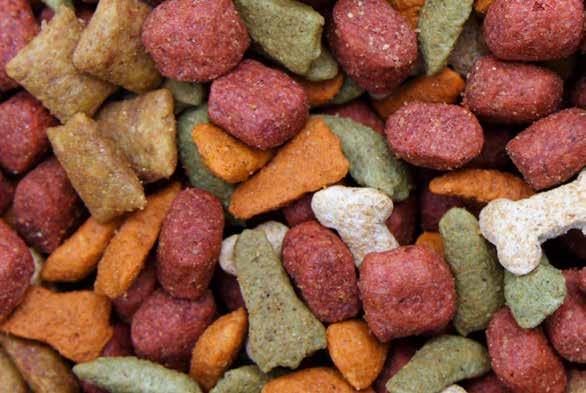














Well, it finally feels as if Spring has arrived and with it a bit of drier and warmer weather. So, it’s the perfect time to dig out this gem. It really is a lovely walk, with beautiful views and scenery. There is a nice varierty of terrain as the walk leaves from Calver, along the River Derwent to Froggatt and then as far up as Grindleford, before heading back through Froggatt Woods and along the river to return to Calver.

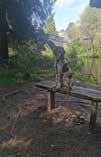
A mid-length walk which should take you and your dog around 2½-3 hours to complete. The walk is mostly on trails and paths but there are a few short stretches of road so please take care. Please wear appropriate footwear and as always, please follow the countryside code.
1. Facing the gallery take the single-track tarmac road to the left signposted for ‘Calver Mill’. After some distance ignore the gate to the right into Calver Mill and continue straight ahead passing a sign on a stone post for ‘Stocking Farm’.
2. Just prior to reaching some farm buildings follow the road around to the right. After, turn immediately left and pass through a small wooden gate adjacent to a large wooden gate and continue to cross an open field.
3. Upon reaching a river on your right continue ahead keeping the river close on your right. After a short distance pass through a small wooden gate adjacent to a large metal gate. Now continue along a footpath with the river on your right.
4. Pass 2 bungalows on your left, then after a short distance you will reach a road. Cross the road to pass through a gap and then continue along a footpath with the river on your right.
5. After a short distance cross over a footbridge and then continue with the river on your right for some distance, passing through three more wooden gates.
6. Eventually pass through a wooden gate onto a road. Turn right to cross over the river and after a very short distance turn left at a T junction along a road called ‘Hollow Gate’. Continue ahead until the road bends sharp right and uphill. At this point continue straight ahead along a road and a footpath signposted for ‘Grindleford Bridge’.
7. The road turns into a lane with a dry-stone wall on both sides, then into a footpath. Shortly after this pass through a gap adjacent to a large metal gate, into a field, and continue with a dry-stone wall on your right. When the dry-stone wall on your right comes to an end bear slightly to the right following an arrow on a marker post, to continue to cross an open field.
8. Pass through a gap and then continue with a dry-stone wall on your left for some distance before passing through another gap to cross an open field. Pass through another gap to follow a signpost for ‘Froggatt Wood’.
9. Continue along a footpath through woodland and crossing several streams. Pass through a gap and then continue with a stone wall on your left. Then pass through a small wooden gate adjacent to a large wooden gate and cross an open field going downhill.
10. At the bottom of the hill bear slightly left to cross over a stream and continue ahead to pass a telegraph pole on your right. Cross an open field and at the far side pass through a wooden gate and onto a road. Turn right along the road for a very short distance and then turn right along a lane and signposted footpath.
11. After some distance follow the lane sharp right and after a very short distance pass a marker post on your right. Ignore the path to the left and continue straight ahead to cross over a stream. After a very short distance pass through a small wooden gate just off to your right and enter a field.
12. Cross the field towards a marker post. At the marker post turn left signposted as ‘The Wellington Boot Route’. Pass through a large gap in a wall pass by two marker posts on your right.
13. You will begin to enter some trees. Pass two more marker posts on your left and continue along a wooden walkway to pass through a wooden gate and uphill through the trees until you reach a drystone wall in front of you. Bear slightly right and continue with the wall on your left, ignore a gate on the left and contine.Then, following an arrow on a marker post on your right, pass through a large gap in the wall on your left.
14. Continue straight ahead, now, with the wall on your right. After some distance cross over a stream on your left and then continue ahead to cross over a walkway/bridge. Immediately after
the bridge pass through a large gap in a wall directly in front of you.
15. Still amongst trees follow the arrow on a marker post on your left to continue ahead. At a marker post with an arrow pointing to the left follow the arrow on a path of laid flag stones.
16. Cross over some stepping stones over a fast running stream, then continue to cross over two more streams. Pass a marker post on your right, then cross over another stream. Continue gently uphill for some distance, eventually the path continues with a wall on your right. Pass through a small wooden gate adjacent to a large wooden gate onto a road.
17. Turn right, then shortly after passing ‘Moorlands Farm Bed & Breakfast’ on your right, turn left along a road called ‘Malthouse Lane’. Continue along ‘Malthouse Lane’ for some distance and then at the far end of the road follow it sharp around to the right and downhill.
18. At a T-junction turn left. Continue ahead, ignoring a road on your right and then look out for a small wooden gate on your right. Pass, through to continue along a footpath with a river on your right. Cross over a footbridge and then continue with the river on your right.
19. Continue for some distance and then at a split in the path take the right split, reaching some steps up to a road. Cross the road, pass through a gap and then continue along a footpath with the river on your right. After some distance climb up some steps, cross over a footbridge and then continue with the river on your right.
20. After some distance cross a wooden footbridge, climb some steps and continue with the river on your right. Further on pass through a small wooden gate along the path.
21. Pass through the wooden gate onto a road. Turn right and continue for some distance, reaching a junction. Turn right along a road and cross over the river to return to ‘Calver Mill Gallery’
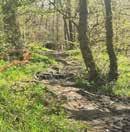
This walk is for illustrative purposes only. Voice Magazines Ltd takes no responsibility for anyone who chooses to follow this route and encourages all walkers to obey all byelaws and signs and to respect the area they are walking in, ensuring they pick up all dog mess and obey the countryside code at all times.



































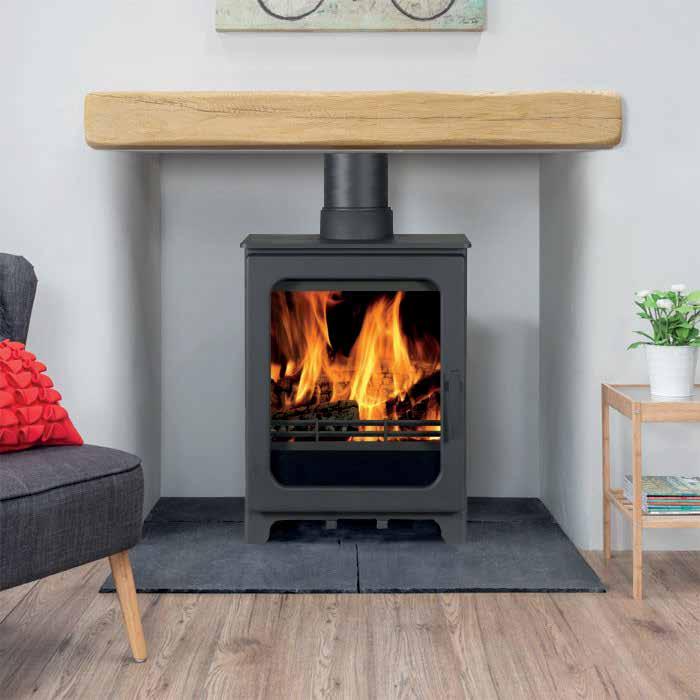





From supply only to full installation we offer the full package. Our experienced and knowledgeable design teams are here for you, offering a full, free of charge planning and design service. If you’re after a bathroom or kitchen we are serious about creating the best design possible to suit your budget.

One of the largest showrooms in Nottinghamshire established over 30 years PHONE: 01909 500 130 EMAIL: admin@bathroomandkitchenwarehouse.net www.bathroomandkitchenwarehouse.net



Why not see if we can save you the VAT on your brand new Wet Room / Walk in bathroom


Mike is always glad to hear from you at : mike.musings@outlook.com
Oh dear, I seem to have opened up a can of worms with these latest musings. Far be it for me to comment but Bill, from Westhouses, has been in touch to say that, if he were PM, he’d insist that all politicians be made to undergo a lie detector test before their name be allowed on any ballot paper.
He was prompted to contact me having seen the headline in a national daily newspaper in March which, in bold type, proclaimed that prior to the General Election due later this year…….
Boris Vows to Campaign on ‘Great’ Brexit Freedoms.
I’m not going to pass judgement on that specific strategy says Bill - other than to ‘wish Boris good luck on that one pal!’ - but do question the wisdom of any political party seeking to appeal to voters by making use of someone whom fellow MP’s have deemed to be, at best, ‘economical with the truth’, and at worst, an outright liar. In Bill’s view, the Conservatives must be clutching at straws if they think Boris is the solution to their current unpopularity.
Over the years, Bill has become disenchanted with UK politics. He accepts however, that some politicians - probably the majority - regardless of whether their political leanings are of the left, right or centre, are sincere in their desire to do what is right for their constituents and the country as a whole. There are, nonetheless, far too many who are not and he wants his lie detector initiative to ‘weed them out’ at source.

Bill, who must sit at home in Westhouses thinking long and hard about how he could improve life for us all, offered another solution. He is seriously thinking of forming his own political party and have candidates stand in every UK constituency. In an effort to keep things simple, these upright men & women would offer no policies but simply represent the None of the Above party. If it gets off the ground, he thinks a ‘landslide’ victory for the NOTA’s might just be possible.
On another topic, Darren from Somercotes has been in touch with a very personal dilemma. He’s been having health problems recently and was advised by his GP to walk a minimum of 10,000 steps on a daily basis. This wouldn’t cure his ailment but would apparently keep things under control.
Darren’s problem however, is that his wife is much smaller and when, keen to provide support, she accompanies him as he takes his daily exercise, by the time he has done 7,000 steps she has done the full 10,000.
Darren is in a quandary and is unsure as to whether or not he should change his GP or his wife. I was unable to comment, other than to commiserate with him, but said that I would seek the views of Voice Magazine readers.
No pressure folks, but there is a lady in Somercotes awaiting the verdict!!

























There’s nothing like a bit of gothic thriller for immersing yourself in another world and author Michelle Paver has a great talent for suspense and menace. Her other gothic novels, Dark Matter and Thin Air, were bestsellers and Wakenhyrst, the most recent book, is another treat for fans of creepy, gripping and spooky tales.
It’s an engrossing clever story, atmospheric and dark, centred around Maud, a young girl who grows up in a

grand house on the edge of the Fens. Her mother dies in childbirth and her life is ruled by her despotic father who she adores – until she starts to find out about his secrets.
Paver builds tension brilliantly. Maud is a superb brave heroine, her father a perfect villain. Religion, superstition –and a clever narrative around the place of women in Edwardian times. What’s not to love?



Families — we all have them. Be they the ones we are born into, or the ones we create with other like-minded souls during our lifetime.
So important are families to us that the United Nations even has a designated day set aside, 15 May each year is The International Day of Families. A day that (allegedly) “provides an opportunity to promote awareness of issues relating to families and to increase the knowledge of the social, economic and demographic processes affecting families”.
Very grandiose.
But there is an important message behind this statement, namely that families ARE important to the wellbeing and economic success of a nation.
When birth rates slow down, as they are doing, women around the globe are more likely to join the labour market – thus increasing not only their prosperity, but the prosperity of their nation. On the other hand, smaller families are less likely to cope with care obligations – looking after older family members, for example.
There’s never a win-win, is there? Back to families…
In some parts of the world, several generations live under one roof. Caring for older relatives is a given, and it would be unheard of to place a loved one in a care facility – unless for medical reasons.

Now, unless the caring is split amongst family members, there is the distinct possibility that
the burden will fall unfairly on one family member. Possibly taking that person out of the paid workforce and restricting their economic opportunities.
Without being sexist (or should I be saying “genderist” these days?) that person is more likely than not to be a woman who may already have lost out on the career and pension ladder by taking time out to bear and raise children.
Of course, that person may be perfectly happy for the burden of care to fall on their shoulders, but what if they aren’t? What if they become a seething pot of resentment? How comfortable would family life be in that situation?
The solution, of course, is for families to refocus to reflect the 21st century. It is no longer a given that a family comprises a mother, father, and children, so our ideas about family life should no longer be predicated on that “nuclear family”.
If mum wants to be a stay at home mum and can afford to…great!
If dad wants to be the one at home with the kids…amazing!
Two mums? Two dads? Cool, so what?
One parent family? Kudos to them for coping single-handedly!
As long as love, care, and respect are present in a family setup, it really doesn’t matter what a family looks like…does it?









Pitcherwits® are crossword puzzles where some of the clues are in pictures.
Sound easy? It’s not called “Pit-your-wits” for nothing!
picture clues, combined with Professor Rebus’
sense of humour, will keep you entertained for hours.

9 Download a version of wild arboretum? (8)
11 Bit of monochrome shading can be hard to pin down (4,4)
17 Beef, Duke? (10) Down
1 We make lifelong attempts to be in blue state (7,3)


2 Why a car crashed into an architectural feature (7) 5 “Founded a nation, did I? That’s just as well!” (2,8)
10 Losing fluid because of broken linkage (7)



























Local family run business providing a friendly reliable service that guarantees quality Fully insured and with years of experience , we provide a wide range of landscaping and garden maintenance services for both domestic and commercial properties , everything from cutting grass or removing trees to landscaping large building projects.
GROUNDS MAINTANENCE:
• Lawn Mowing
• Cutting Banks
• Edging & Strimming
• Lawn Care
• Bed Planting
• Weed Control
• Tree Surgery
• Stump Removal
• Hedge Cutting, Reduction & Removal
•
• Driveways
• Patios
LANDSCAPING:
• Pathways
• Fencing
• Sleeper Beds • Turfing
• Planting
• Ponds
We offer a FREE NO OBLIGATION quote service!



For more info T: 07506 797 978 or E: info@fourwindslandscaping.co.uk


Top Tip:
May is such a brilliant time in the garden. Time to plant out, sow for later in the summer, take cuttings to give you more plants for free. It can’t get any better than this.
It’s also a good time to prune forsythia to keep a bright bushy shape and plenty of blossom next year.
Tender plants which have been started off indoors can be hardened off now – take them outside during the day and bring under cover at night for a few days then they won’t be shocked into slower growth. You also need to be careful with baskets and containers. They can be planted up as soon as it feels like the frosts are over but have a couple of rolls of fleece handy if it feels like it’s going to be a cold night. If you’ve got seedlings growing in rows or pots thin them out once they’ve got a couple of proper leaves (ie not the little leaves that emerge as they start to grow). This way they’re less likely to suffer from fungus and they have a better chance of flourishing if they’re not having to fight for space.
Watch out for bright red lily beetles. They can attack fritillaries as well as lilies and will very quickly decimate your plants.
You can keep on sowing bright summer annuals in beds – they’ll give you bright colour around the end of July and August when bare patches start to show.
Feed your daffs and tulips with a liquid fertiliser now to encourage a good strong display next year.
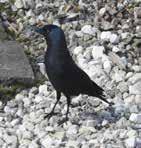
From autumn into late winter the garden visiting birds have grown in numbers and diversity. Then, a few weeks ago as the first warmth seemed to arrive, many of the birds reduced. Night-time temperatures make a big difference because if it is very cold then small birds burn up body fat. This needs to be replenished the following day and as a matter of urgency – if they don’t refuel then small birds die. Indeed, this is why our garden feeders become so important in wintertime. However, a couple of cooler nights brought the numbers back up and whilst the titmice (blue, great, and coal tits) have never got back to the highs of a couple of months ago, the finches in particular have been doing very well. Usually, a winter visitor I think the siskins may be stopping to breed locally, with several still on my feeders at any one time. They are joined by greenfinches, bullfinches, chaffinches, and goldfinches, all of which will, it seems, breed in or around the garden.
Jackdaws have returned to nest in a neighbour’s chimney stack, and the local carrion crows have a nest and territory in a nearby woodland. Both species are coming to the garden to feast on the hanging fat-balls. Also in the wood, a chiffchaff started singing in late March almost like somebody just threw a switch and the song ‘chiff-chaff, chiff-chaff, chiff-chaff’ started up. This is not to be confused with the bi-syllabic, repeated ‘seesaw’ of the local great tits. Another loud and insistent call is that of the nuthatches that hold territory and occasionally come to the feeders. At this time of year, the repeated ‘chwit-chwit’ and the loud, ‘kee-kee-kee’ are

very distinctive. Much of the bird activity is now settled on establishing a breeding territory whilst attracting and protecting a suitable mate. But levels of activity will carry on growing as summer-breeding migrants pour in from April onwards. As always, the period from May to August promises to be a very busy time for the songbirds of the Peak District!
Along with new arrivals from the south, many of our winter birds will have departed northwards to their own breeding grounds. This may be the far north of Britain or else back into northern Europe or even Iceland. This is a time of great change, and for birds such as the starling for instance, our winter population includes gatherings of hundreds of thousands or even up to a million birds. Some of these breed locally but many head back across Europe for the summer. In Russia for instance, the return of the starling is viewed as a harbinger of springtime, very much as we await the coming of the swallow back from Africa. Even our population of winter blackbirds mixes those which reside here and breed locally, and a big influx of continental birds from across the North Sea. Of course, once all this movement is settled and the birds have bred, then it will all start over again for the next winter period.








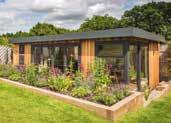




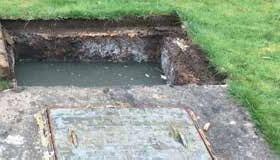












✽ 2 spacious en-suite bedrooms
✽ A fully enclosed garden
✽ 2 small to medium dogs welcome (3 upon request)
✽ Fully equipped kitchen, including an American style fridge freezer
Search ‘The Little Red Hen House’ at: *SALE* PRICES REDUCED ON


✽ Perfect for exploring the stunning Northumbrian Heritage Coastline
✽ Close to a range of dog friendly pubs, cafes and restaurants in stunning Warkworth
✽ We have fast fibre Wi-Fi and smart TV’s


Treat yourself to a luxury break at the 4* Gold Award winning Little Red Hen House. An elegant and cosy holiday home just a 7 minute drive from award-winning and dog-friendly Warkworth beach. www.coquetcottages.co.uk








